Insurance policies can be complex documents filled with industry jargon.
Understanding key terms is crucial before signing any agreement.
By familiarizing yourself with common insurance terminology, you’ll be better equipped to make informed decisions about your coverage.
Knowing these seven essential insurance terms will help you navigate policy documents with confidence and ensure you select the right coverage for your needs. Whether you’re looking into life insurance, auto insurance, or property coverage, these terms appear frequently across various types of policies.
Taking the time to learn them will empower you to ask the right questions and understand the full scope of your insurance protection.
1) Premium
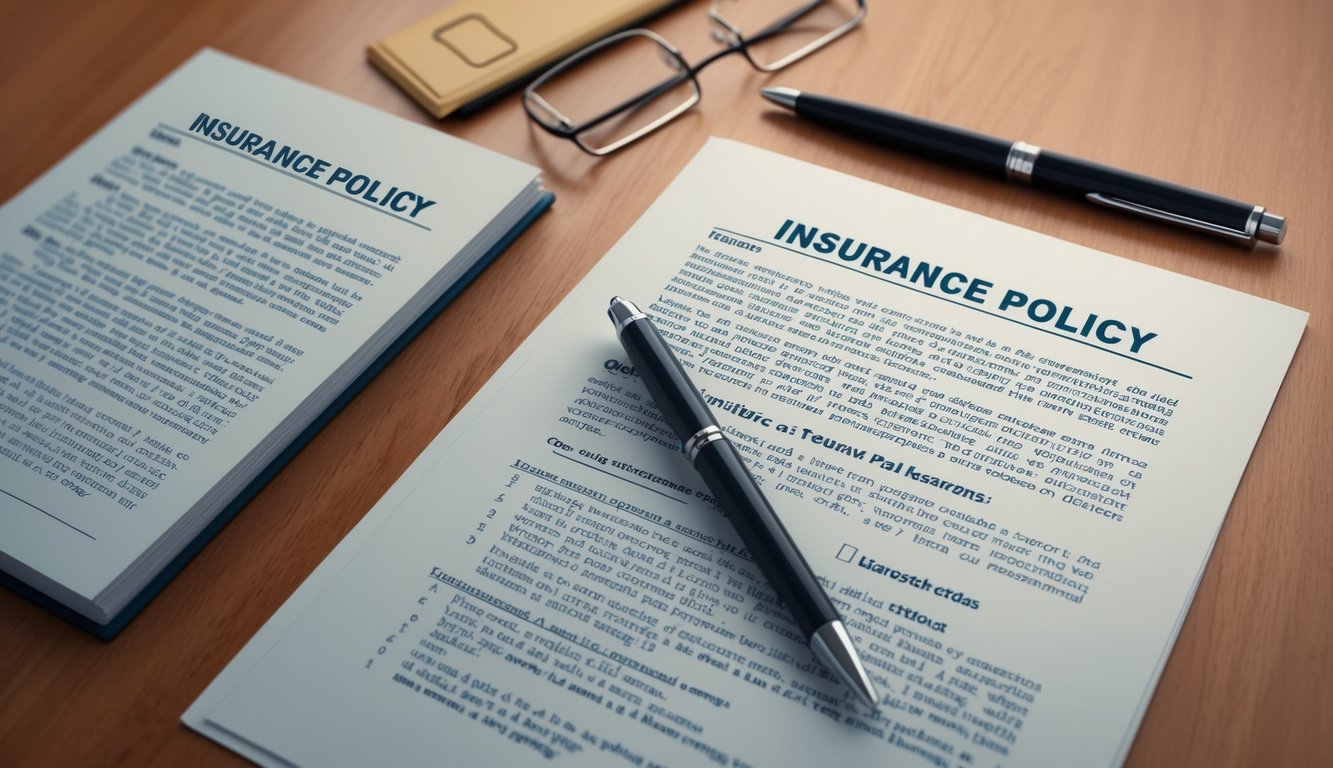
A premium is the amount you pay to your insurance company for coverage.
It’s the cost of your insurance policy, typically paid on a monthly, quarterly, or annual basis.
When you sign up for an insurance policy, you agree to pay premiums to keep your coverage active.
The amount you pay depends on various factors, including the type of insurance, your coverage limits, and your personal risk profile.
For example, if you’re getting car insurance, your premium might be influenced by your driving history, the type of vehicle you own, and where you live.
For life insurance, factors like your age, health, and lifestyle can affect your premium.
It’s important to understand that your premium is separate from other costs you might encounter, such as deductibles or copayments.
Your premium is what you pay to maintain your coverage, regardless of whether you file a claim.
If you fail to pay your premium on time, your insurance coverage may lapse.
This means you could be left without protection when you need it most.
Some insurers offer a grace period for late payments, but it’s best to stay current to avoid any gaps in coverage.
When comparing insurance policies, don’t just focus on the premium.
Consider the coverage limits, deductibles, and other policy features to ensure you’re getting the best value for your money.
2) Deductible
A deductible is the amount you pay out of pocket before your insurance coverage kicks in.
It’s a crucial component of your insurance policy that directly affects your premiums and out-of-pocket expenses.
Insurance deductibles apply to various types of coverage, including health, auto, and homeowners insurance.
The higher your deductible, the lower your monthly premiums tend to be.
For example, if you have a $1,000 deductible on your auto insurance and file a claim for $5,000 in damages, you’ll pay the first $1,000, and your insurance will cover the remaining $4,000.
Some policies have separate deductibles for different types of claims.
In health insurance, you might encounter yearly deductibles, which reset annually.
When choosing a deductible, consider your financial situation and risk tolerance.
A higher deductible can save you money on premiums but requires more out-of-pocket expenses if you need to file a claim.
Remember that deductibles don’t apply to all services.
For instance, many health insurance plans cover preventive care without requiring you to meet your deductible first.
3) Underwriting
Underwriting is a crucial process in the insurance industry.
It’s how insurers evaluate the risk of providing coverage to you.
When you apply for insurance, underwriters assess various factors to determine your premium.
These factors can include your age, health, occupation, and lifestyle for life insurance.
For property insurance, underwriters consider the age and condition of your home or vehicle.
They also look at your claims history and credit score.
The underwriting process involves collecting and analyzing data about you.
This helps insurers decide whether to offer you coverage and at what cost.
Sometimes, underwriters may request additional information or medical exams.
This helps them make a more accurate assessment of your risk profile.
The outcome of underwriting affects your premium and policy terms.
If you’re considered high-risk, you might face higher premiums or limited coverage options.
Understanding the underwriting process can help you prepare better when applying for insurance.
It allows you to anticipate what information you’ll need to provide.
You can improve your chances of favorable underwriting by maintaining good health, a clean driving record, and a strong credit score.
These factors can lead to lower premiums and better coverage options.
4) Policyholder
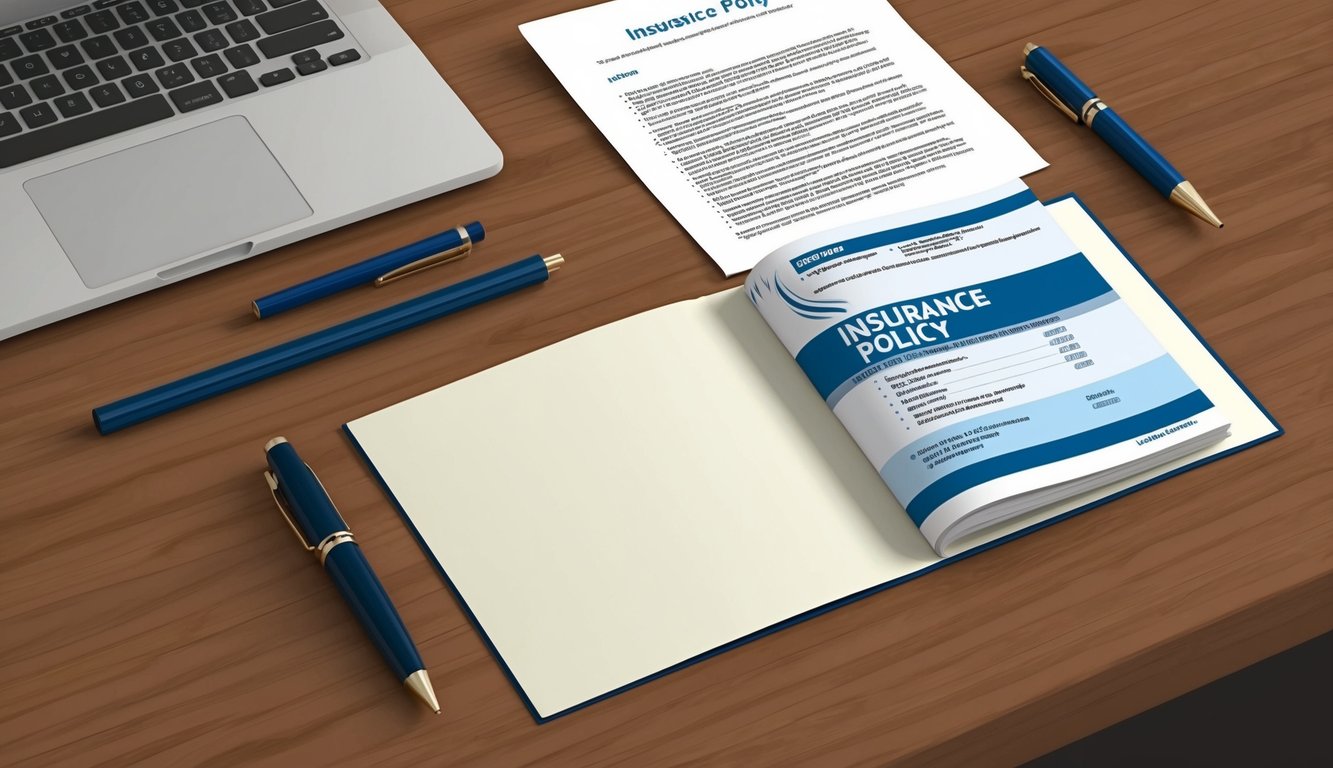
A policyholder is the individual or entity who owns an insurance policy.
When you purchase insurance, you become the policyholder.
This role comes with specific rights and responsibilities.
As a policyholder, you’re responsible for paying premiums to keep your coverage active.
You also need to provide accurate information when applying for insurance and report any changes that might affect your policy.
Policyholders have the right to file claims when covered events occur.
You can also make changes to your policy, such as adjusting coverage limits or adding beneficiaries.
It’s important to understand your policy thoroughly.
Read the terms and conditions carefully to know what’s covered and what’s not.
This helps you make informed decisions about your insurance needs.
Keep your policy documents in a safe place.
You may need to reference them when filing a claim or making changes to your coverage.
It’s also wise to review your policy annually to ensure it still meets your needs.
Remember, as a policyholder, you’re entering into a contract with the insurance company.
Both parties have obligations to fulfill.
If you have questions about your role as a policyholder, don’t hesitate to ask your insurance agent or company representative.
5) Exclusion
An exclusion in insurance refers to specific events, conditions, or items that are not covered by your policy.
It’s crucial to understand these exclusions before signing any insurance agreement.
Exclusions vary depending on the type of insurance and the specific policy.
For homeowners insurance, common exclusions often include flood damage, earthquakes, and pest infestations.
You’ll typically find exclusions listed in a separate section of your policy document.
It’s important to review this section carefully to avoid surprises when filing a claim.
Some exclusions are standard across most policies.
For example, wear and tear on your home is usually not covered, as it’s considered part of regular maintenance.
Other exclusions might be less obvious.
For instance, damage from bedbugs or termites is often excluded from standard homeowners policies.
Understanding exclusions can help you decide if you need additional coverage.
In some cases, you may be able to purchase separate policies or riders to cover excluded events.
Remember, exclusions are not designed to trick you.
They help insurers manage risk and keep premiums affordable for most policyholders.
Always ask your insurance agent to explain any exclusions you don’t understand.
6) Grace Period
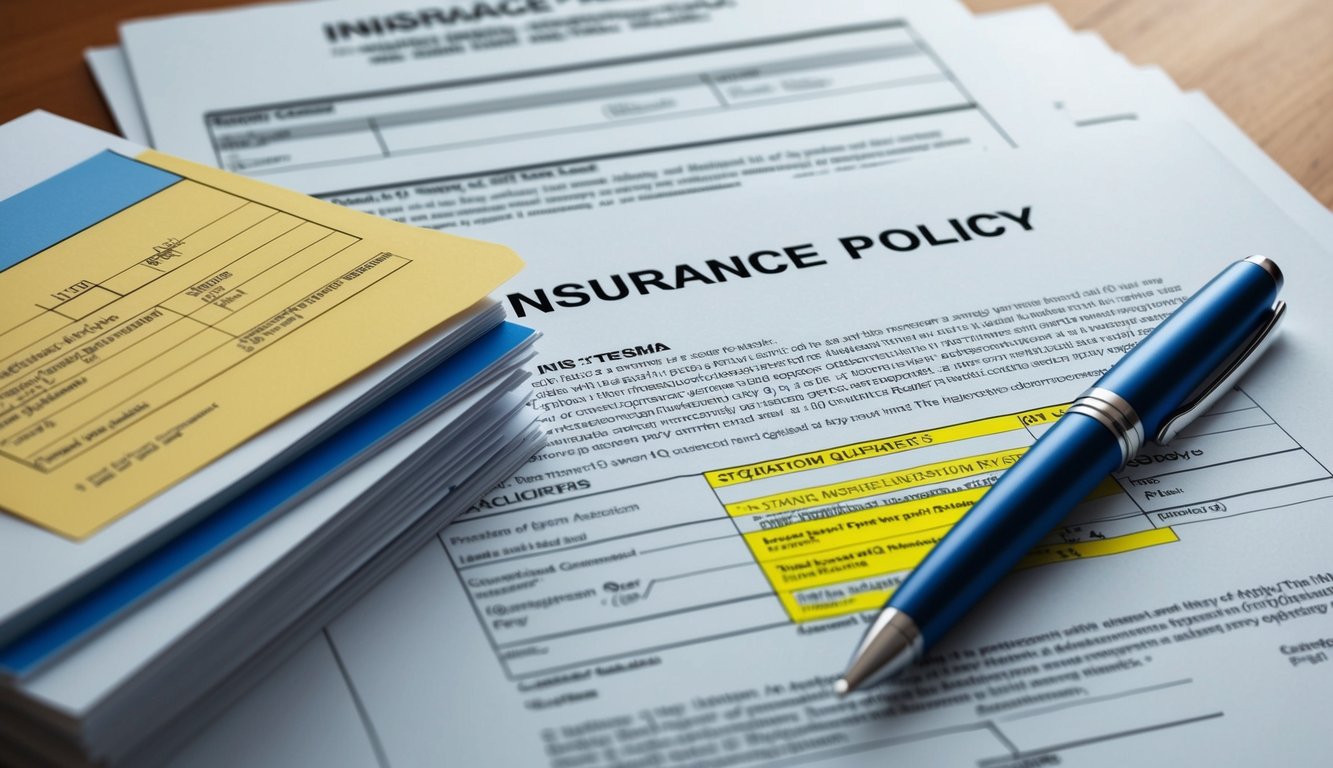
A grace period is a crucial insurance term you should understand before signing a policy.
It refers to the extra time you’re given to pay your premium after the due date without your coverage lapsing.
Most insurance policies include a grace period to provide flexibility for policyholders.
This period typically lasts between 10 to 30 days, depending on the type of insurance and your specific policy terms.
During the grace period, your insurance coverage remains active.
This means you’re still protected even if you haven’t paid your premium on time.
It’s a safety net designed to prevent immediate loss of coverage due to late payments.
Grace periods can vary by insurance type and provider.
For example, auto insurance grace periods are often shorter than those for life insurance policies.
It’s essential to check your policy documents or ask your insurer about the specific grace period for your coverage.
Remember that while the grace period offers some leeway, it’s not meant to be used regularly.
Consistently paying your premiums on time is the best way to ensure uninterrupted coverage and avoid potential penalties.
If you fail to pay within the grace period, your policy may lapse.
This can lead to a gap in coverage, leaving you unprotected.
In some cases, you might need to go through a reinstatement process to restore your policy, which can be complex and potentially costly.
7) Claim
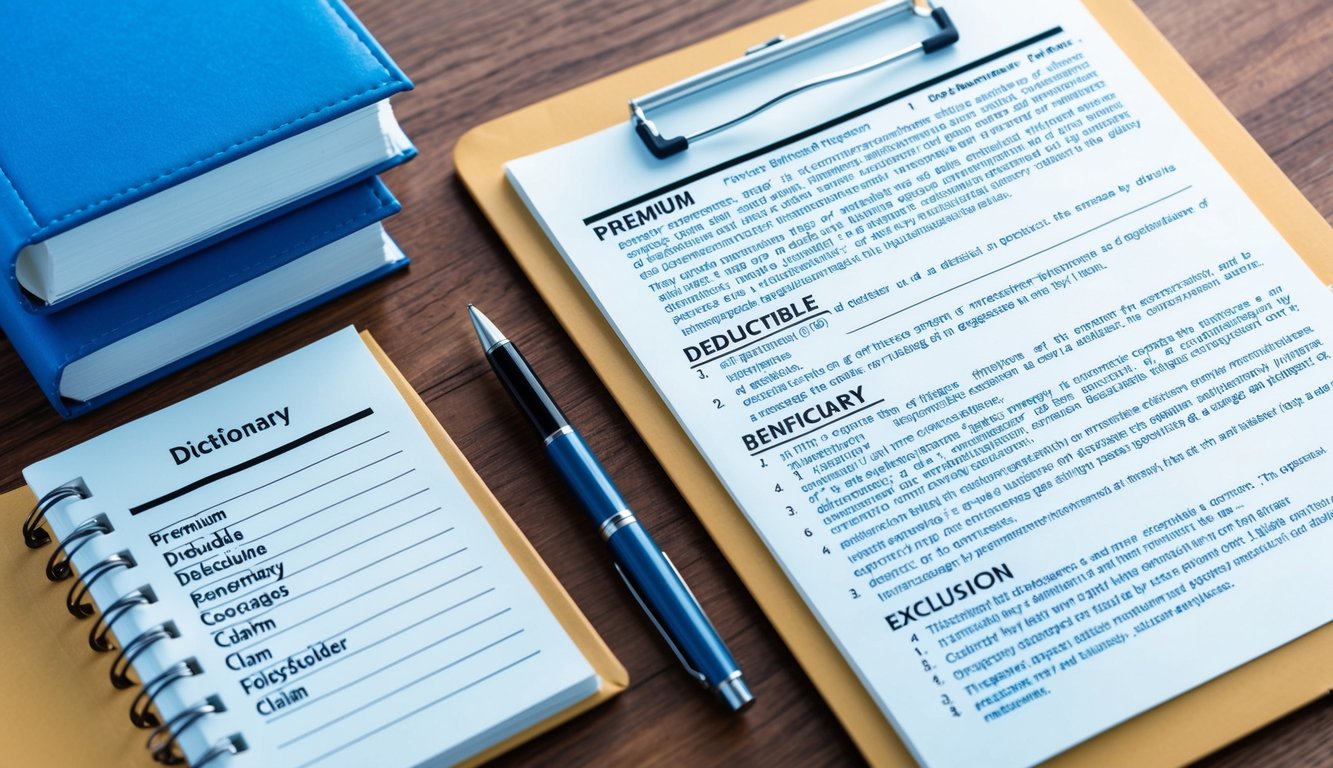
A claim is a formal request you make to your insurance company to receive compensation for a covered loss or event.
When you file a claim, you’re essentially asking your insurer to fulfill their end of the insurance contract.
Claims can be filed for various reasons, depending on your policy type.
For example, you might file a claim for car damage after an accident or for property damage due to a natural disaster.
The claim process typically begins when you notify your insurance company about the incident.
You’ll need to provide details about what happened and any supporting documentation, such as police reports or photos of the damage.
Your insurance company will then review your claim and determine if it’s covered under your policy.
They may send an adjuster to assess the damage and estimate repair costs.
If your claim is approved, you’ll receive a payout from your insurer.
Remember that you may need to pay a deductible before your insurance coverage kicks in.
This is the amount you’re responsible for paying out of pocket.
It’s important to understand your policy’s claim process and requirements before you need to use it.
Familiarize yourself with the steps involved and any time limits for filing claims to ensure you’re prepared when the need arises.
Understanding Your Insurance Policy
Insurance policies contain crucial information about your coverage.
Familiarizing yourself with key components and learning to interpret policy documents will help you make informed decisions about your insurance.
Key Components of an Insurance Policy
Insurance policies typically include several essential elements.
The declarations page outlines basic policy information like your name, address, and coverage limits.
The insuring agreement describes what the policy covers and under what conditions.
Exclusions specify what is not covered.
Conditions outline your responsibilities as the policyholder, such as paying premiums on time and reporting claims promptly.
Endorsements modify the standard policy, adding or removing coverage.
Definitions explain important terms used throughout the document.
Reading and Interpreting Policy Documents
Start by carefully reviewing your declarations page to ensure all personal information is correct.
Pay close attention to coverage limits and deductibles.
Read through the insuring agreement to understand what events or losses are covered.
Check exclusions to know what’s not protected.
Examine conditions to understand your obligations.
Look for any endorsements that may affect your coverage.
If you encounter unfamiliar terms, refer to the definitions section.
Don’t hesitate to ask your insurance agent for clarification on any confusing language or provisions.
Common Insurance Terms Explained
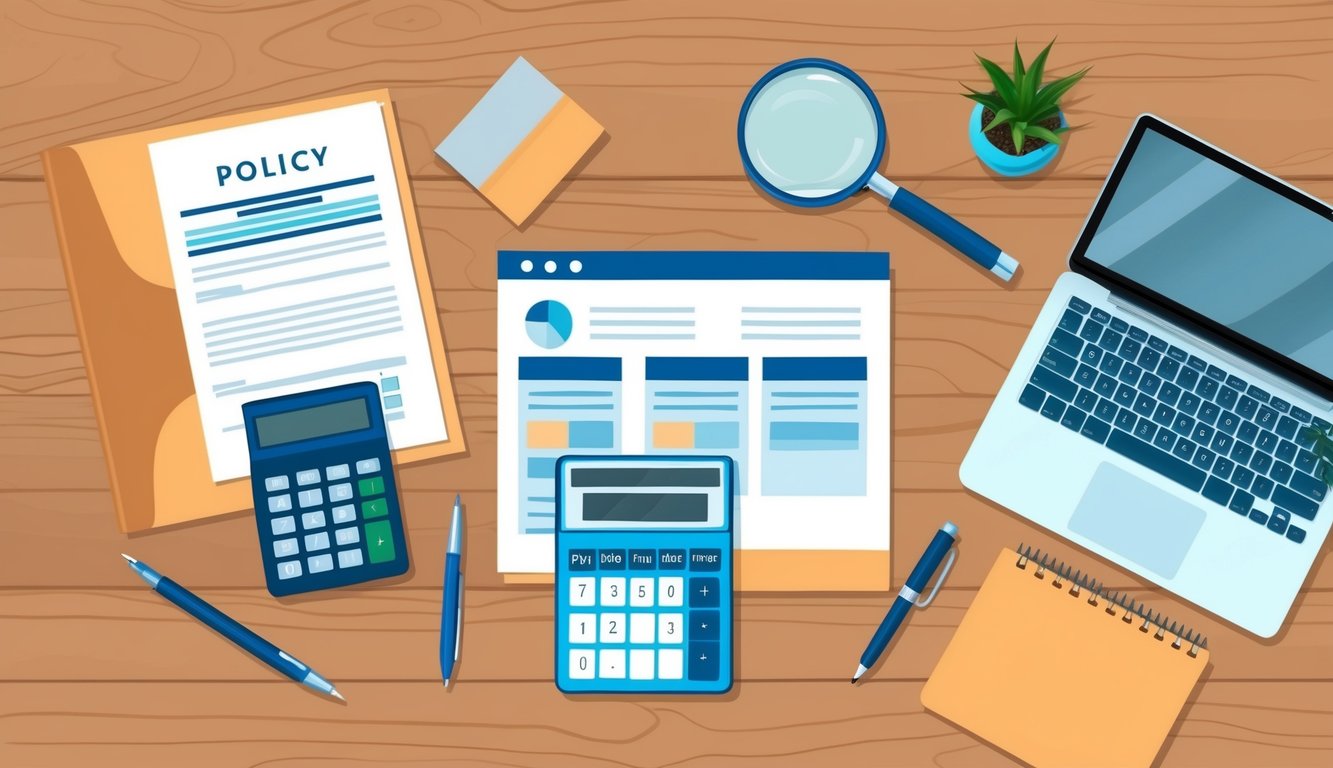
Understanding key insurance terms is crucial when reviewing and signing a policy.
Two fundamental concepts that directly impact your coverage and costs are premiums and deductibles.
Premium
Your insurance premium is the amount you pay to maintain your policy coverage.
It’s typically paid monthly, quarterly, or annually.
Premiums vary based on several factors:
- The type of insurance (e.g., auto, home, life)
- Your coverage limits
- Your deductible amount
- Your personal risk factors
Higher coverage limits often result in higher premiums.
Conversely, choosing a higher deductible can lower your premium costs.
Insurance companies calculate premiums using complex algorithms that assess your risk profile.
For example, your driving record affects your auto insurance premium, while your health history influences life insurance rates.
Deductible
A deductible is the amount you agree to pay out-of-pocket before your insurance coverage kicks in.
When you file a claim, you’re responsible for paying the deductible first.
After that, your insurer covers the remaining costs up to your policy limits.
Deductibles serve two main purposes:
- They help keep premiums lower
- They discourage small, frequent claims
Choosing a higher deductible typically results in lower premium payments.
However, it also means you’ll pay more out-of-pocket if you need to file a claim.
It’s important to select a deductible amount you can comfortably afford in case of an unexpected event.
Some policies have different deductibles for various types of claims.
For instance, your homeowners insurance might have separate deductibles for general claims and hurricane damage.






